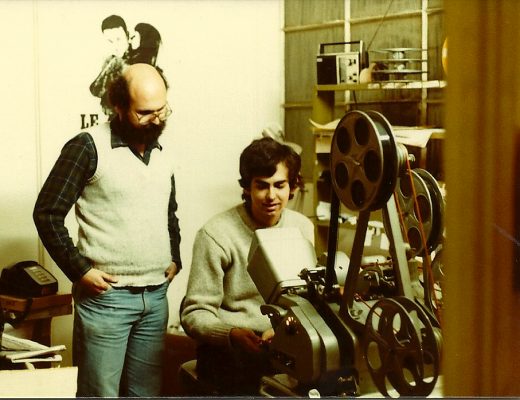Last year we revamped our voiceover recording chain, replacing a microphone and “voice channel” (a microphone preamp with additional signal processing) that were both dying. Both replacements – a KEL Song Sparrow large-diaphragm condenser microphone and Presonus VXP voice channel – are excellent tools in isolation. However, we overlooked something in their combination that has come back to bite us. Please learn from our mistakes…
First, Some Background

The Focusrite VoiceMaster Pro is a good example of a voice channel. In addition to a mic preamplifier with gain controls, it also has a downward expander, compressor, equalizer, and de-esser, in addition to other harmonic “sweeteners.”
One of the advantages of using a voice channel instead of a straight microphone preamp is that they tend to have a noise gate or downward expander that automatically reduces the volume when things get quiet, pushing your noise floor down even further. The trick is setting up their threshold to not alter the volume during the ends of words (which would chop them off prematurely), but to otherwise squash everything else such as breath noises in between phrases. Recording a cleaner signal can save a lot of time later cleaning it up in post.
Like many small content producers, our studio is a converted room in our house. Using existing construction means we don’t enjoy the benefits of an isolated floating floor, floating walls, or a special high volume/low velocity HVAC (heating ventilation air conditioning) system to cut down on airborne and vibrational noise. We’ve written in the past on how to reduce hum and vibration and dampen unwanted echoes on the cheap, but we still have issues with motors, pumps, and other electromechanical objects in the house adding to the residual noise floor.
Despite setting the threshold on the VXP the best we could, we’ve noticed the signal level on its downward expander occasionally bouncing around even when we thought everything is quiet. When this happens, it opens the door for other noise to sneak through as well. This appears to be due to the electromechanical noises mentioned above. Within reason, we can shut off some things such as the HVAC during recording (great fun during the summer), but not everything. The frequencies are so low that we can’t hear them with our unaided ears, but the mic and VXP can certainly pick them up.
The Typical Cure
 Your normal recourse at this point would be engage the “low cut” switch on your microphone, mic preamp, or mixer. This filters out the lowest frequencies, which helps reduce the effects of vibration, wind noise, and other sources of rumble. The picture at right shows the low cut setting on a typical large-diaphragm condenser microphone: Look for the icon of a diagonal line that rises and then flattens out, indicating it’s the lower frequencies that are being reduced and the others are untouched. Most mics have a fixed “corner” frequency – typically around 120 Hz – below which they gradually reduce the volume.
Your normal recourse at this point would be engage the “low cut” switch on your microphone, mic preamp, or mixer. This filters out the lowest frequencies, which helps reduce the effects of vibration, wind noise, and other sources of rumble. The picture at right shows the low cut setting on a typical large-diaphragm condenser microphone: Look for the icon of a diagonal line that rises and then flattens out, indicating it’s the lower frequencies that are being reduced and the others are untouched. Most mics have a fixed “corner” frequency – typically around 120 Hz – below which they gradually reduce the volume.
The image below zooms in on the input section of our retired Focusrite VoiceMaster Pro voice channel; the low cut section is in the “o” of Focus. The VoiceMaster Pro allows you to dial in the frequency below which the signal is being cut.Engaging either one would allow us to reduce or eliminate the low-frequency rumble that is causing our downward expander to falsely trigger. The adjustable cut frequency on the VoiceMaster allowed us to dial in the best compromise between noise reduction and preserving the lower, richer tones of a voice.
But…
Alas, the KEL Song Sparrow does not have a low-cut switch. No problem; we can cut the rumble at the mic preamp, like we did with our old Focusrite voice channel – except our new Presonus VXP doesn’t have a low cut switch, either (at least, not before the downward expander, where it is needed to cut the rumble before it messes with the threshold on the expander). Drat.
If there had been a low cut switch on either, we’d be fine – but there isn’t. If we realized the VXP didn’t have a low cut, we could have shopped for a voice mic that did – but we didn’t. The Song Sparrow mic already comes with a reasonable shock mount which cuts some mechanical vibration; next we’re off to try to isolate the mic stand the best we can, and hope our real problem isn’t airborne. In the meantime, keep an eye out for these switches on your gear – you don’t always need them…but when you do, you do.

Filmtools
Filmmakers go-to destination for pre-production, production & post production equipment!
Shop Now













